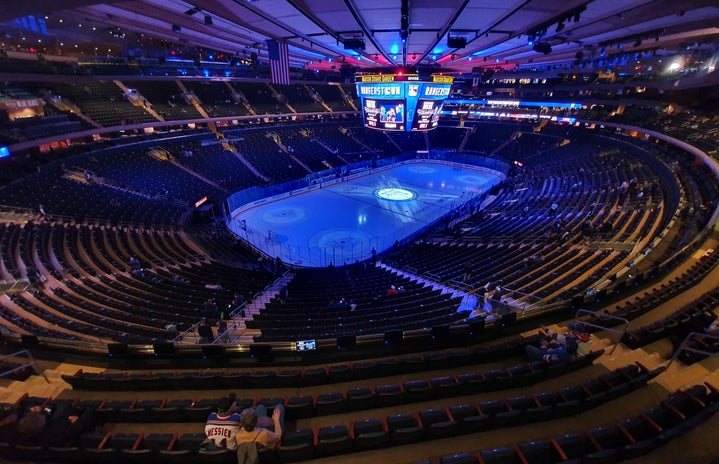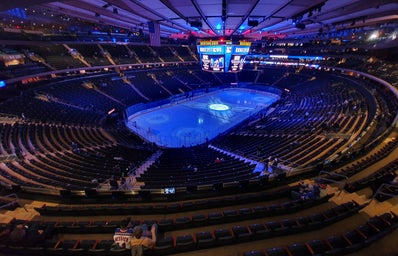My roommate, Rebecca, is from Montreal, so naturally, she is a huge fan of the Montreal Canadiens. About two weeks ago, the Canadiens were in Boston playing their biggest rivals — the Bruins — and of course, we schemed our way into being front and center to watch it all go down. Luckily, this was not my first rodeo; Rebecca, an avid hockey fan, has been dragging me to Boston University home games since the beginning of the season in October. While I initially agreed to go for the free jersey (if you go to eight hockey games, you have a chance to win a free jersey, and I love free stuff), I think I am even starting to enjoy the games themselves. I find myself increasingly more invested in the plays each time and eager to learn more about the sport of hockey. When updating our friends after the game on that Sunday, I texted that “we lost,” “we” as if I was now one of them — a Canadiens fan.
Although I am not quite sure how much of a true Canadiens fan I am now or will be in the future, here are three things I wish I knew before the game and what I learned after. It always helps to be somewhat in the know, and knowing the basic rules of a sport — especially when everyone else knows them — makes it easier to understand and enjoy the game itself!
- hockey is played in three periods
-
At BU, this means 20-minute periods with 15 minutes of break time in between, whereas in the NHL, this means 20 minutes on and 18 minutes off. The additional three minutes are not a super significant difference in comparison to the amount of time spent taking commercial breaks. Did you know that the players just stop playing in the middle of the game because the game is being filmed? I had no idea, and this really threw me off. It really isn’t that big of a deal, but I figured it’s worth sharing because commercial breaks double as a great time to stare at the goalie when he’s taking his water break with his helmet off, or, if you have to pee, a great time to run to the bathroom when the line isn’t super long.
- Penalties lead to power plays
-
When a player gets a penalty, he goes into the penalty box, and that means there’s one less player on the ice for the team who has the penalty. The team that doesn’t have a penalty has a POWER PLAY! A power play is when one team has more players than the other on the ice — if a player is in the penalty box, this is usually five against four. There are different reasons for penalties — tripping, hooking, too many men on the ice, fighting, and cross-checking are a few examples. A penalty typically lasts for two minutes, unless a player bleeds, then it’s double (four minutes). Sometimes, when there are intense fights, the penalty can go into the next period, with the time spent in the box lasting between 10–15 minutes for the player at fault.
- Know the chants
-
According to Rebecca, the Canadiens fans like to chant, “Go Habs Go!” where ‘Habs’ stands for ‘Les Habitants,’ the early Quebec peoples. Unfortunately, we did not hear a lot of this at the game; we instead heard a lot of the unoriginal “Let’s go Bruins!” and “U-S-A,” interspersed with “Olé,” mocking what Montreal chants in their celebrations of a win. At least I am now prepared for when the Canadiens take their next trip to Boston in March!
Stating the obvious here — these are definitely not all the rules of the sport and probably not the most important ones to remember either. All I know is that I had planned on spending the duration of the game reading and responding to my text messages and Snapchats, as per usual, but by the end of the first period my eyes were glued to the net instead of the screen.
I ultimately had a lot of fun… 10/10 would recommend going to a hockey game — especially if your roommate happens to be the team’s biggest fan!
Want to keep up with HCBU? Make sure to like us on Facebook, follow us on Instagram, check out our Pinterest board, and read our latest Tweets!


